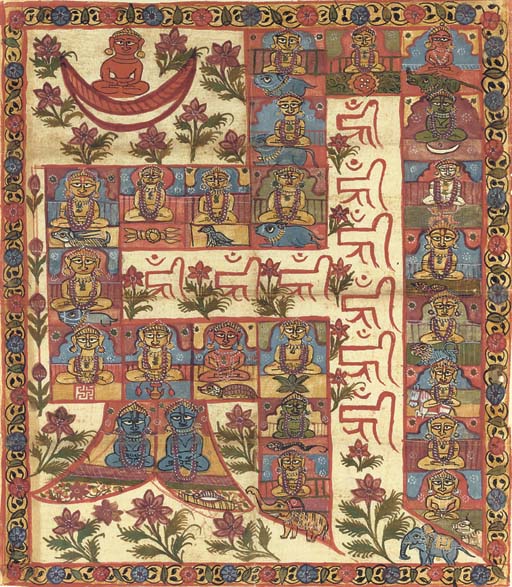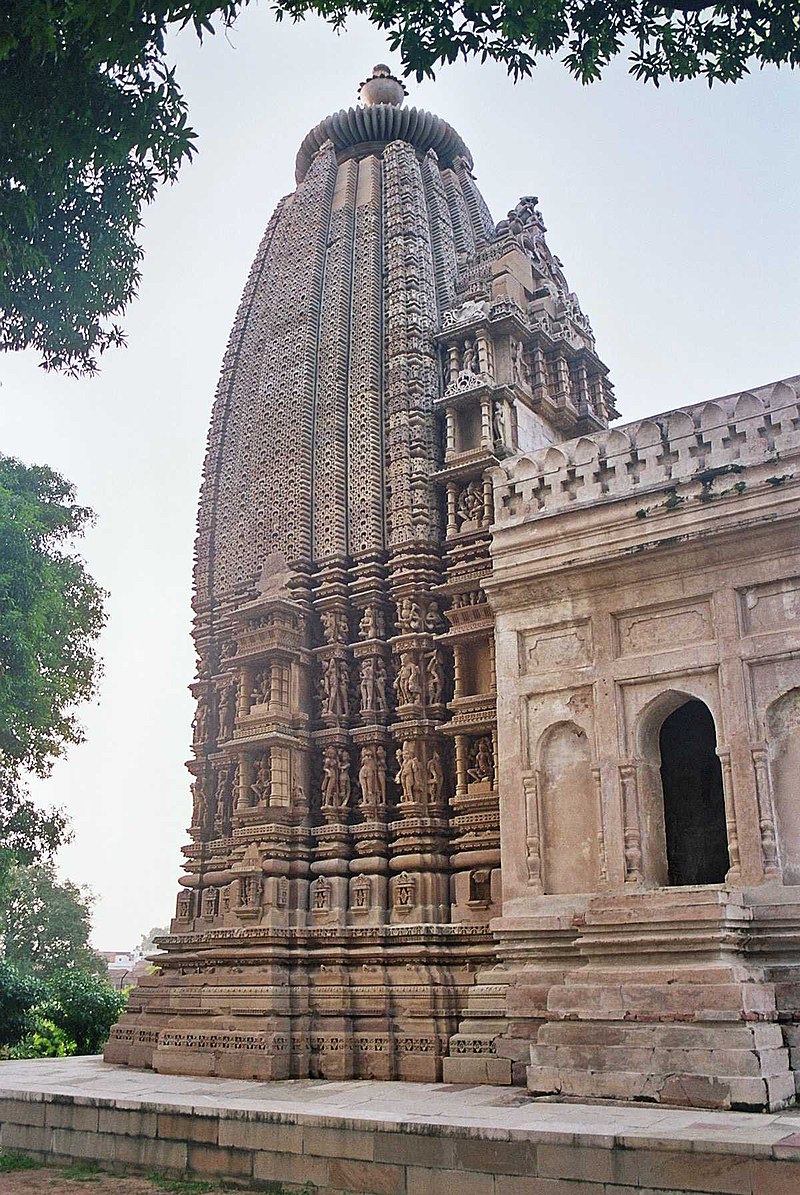The image you just clicked is a stone statue of the emmaciated Shakyamuni Buddha. It was made sometime between 400 and 500 AD in Gandara, which was a Indo-Aryan nation that resided in an area that's now modern day Pakistan. This statue is a part of a collection at Ohio State University.

You can take a closer look of the statue through
this site. If you zoom in around the face, you can see that the pupils have been carved as well. This man's eyes truly compel me.

If you look through that site some
more, you find a whole collection of Gandaran statues and carvings, many of which also depict the Buddha. My favorite part of the archive, is this
slab. I don't know if it relates to hermits in any way. I just wanted to share it because this is somebody's feet. This slab is centuries old and its somebody's feet. This person is long-dead, and their feet may be all we have left of them.

The closest translation of "Buddha" is "one who woke up." There have been many Buddhas throughout history. When people talk about the Shakyamuni Buddha, they are usually refering to the historic Buddha, the one who was born Siddhartha Gautama. He was born sometime in the 5th or 6th century BCE in modern-day Nepal. He was born the son of a king, but at some point in his 20s, he renounced his life, went out into the wilderness, lived a ascetic life at the root of a fig tree (the Bodhi tree), and achieved enlightenment in his 30s. Siddhartha is a sanskrit name meaning "one who has accomplished a goal." The most famous biography of his life is the
Buddhacarita , an epic poem written by a guy named Asvaghosa in the second century AD.

The Shakyamuni Buddha's last words were, "Behold, O monks, this is my last advice to you. All compounded things in the world are changeable. They are not lasting. Work hard to gain your own salvation." Thousands of years later, the spiritualism and traditions that evolved from the Buddha's teachings, Buddhism, is still around today.

One of the oldest practiced religion in human history, Jainism, is as old if not older than the Shakyamuni Buddha by as much as 300 centuries. It stems from around the same area as Buddhism in the Indian subcontinent. The three pillars of Jainism are ahimsa (non-violence), anekantavada (non-absolutism), and aparigraha (asceticism and/or non-possession).

Aparigraha involves resisting greed through self-restraint. Aparigraha is a compound Sanskrit word that translates literally to the opposite ("a-") of "parigraha," or amassing/craving/seeking/seizing. Parigraha leads to bad karma, which means it keeps the soul trapped in the cycle of life and death (samsara). Amoung yogis (who are typically Hindus), aparigraha also refers to not accepting or desiring "unnecessary gifts" and letting go of the illusion of control.

In Jainism, aparigraha is mainly about non-possession (parimita-parigraha) and rejecting desire (iccha-parimana). Possession (both emotional and physical) leads to passions (kashaya), which in turn leads to violence, and non-violence (ahimsa) is probably the most fundamental part of Jainist practice.

There are four kashaya (passions): Anger, Pride, Deceitfullness, and Greed. There are also three sex-passions (male sex-passion, female sex-passion, and neuter sex-passion) and six defects (laughter, liking, disliking, sorrow, fear, and disgust), which all lead to bad karma. This is why ascetic practice, a life of extreme renunciation and seculsion, is sought after in Jainist traditions.

Bad karma, or karmic weight/matter, is a substance that attaches itself to jiva (sentient, living souls), gets activated by kasayas, and weighs the jiva down. This is counter-intuitive to escaping samsara. In order to escape, souls have to float up to Siddha-Loka, which is located at the very top of the occupied universe, Loka-Akasa.

All jiva are inherently in possession of infinite consciousness, energy, and bliss. All jiva, like all the material in the universe, is beginningless, uncreated, and eternal. The jiva is permeable but also constantly in flux, because it's a part of the universe, which is also constantly in flux. It is something that has always existed and will always exist. There are certain, intrinsic paradoxes related to the soul and its desire, which is why Jainist tradition also stresses anekantavada (non-absolutism). To Jains, there is no one statement that can describe the universe, no fundamental truth that can be uttered in a single sentence or that isn't inherently contradictory. The word anekantavada can literally be translated as "not" ("an") "one" ("eka") "side" ("anta") or "the doctrine of not-one-side"

In Jainism, there are seven tattras, or "that which is totally real." The seven things that are "totally real" are jiva, ajiva (non-sentient beings), asrava (the influx of karma on the soul), bandha (the souls bondage to karma), samvara (the stoppage of karma), nirjara (the falling away from karma), and moksha (the liberation of samsara). In some texts, two more tattras are sometimes added. They are bad karma (paapa) and good karma (punya).

Similar to the Buddha, there are twenty-four historic spiritual leaders, or Tirthankara, in Jainism. The word "Tirthankara" can be translated as "maker of a tirtha (crossing place)" in Sanskrit. These leaders have acheived enlightenment AKA omniscence AKA kevala-jhana AKA liberation AKA a simultainious awareness of all space, time, motion, and rest. They are human bridges who have mastered ahimsa, anekantavada, and aparigraha and help bring their followers closer to this liberation.

The life of all Tirthankara follow five stages: Conception, birth, renunciation, omniscience, and liberation. There's some debate over what this liberation may do to the Tirthankara's bodies. Some say that their blood and skin whiten, all their excrement becomes invisible, and their hair stops growing. Others say that their bodies are made of pure crystal, they completely lack blood and other fluids, and a sound emenates from thier bodies. The mothers of Tirthankara's have prophetic dreams during their pregnancies.

The followers of Tirthankara form a "fourfold community." This community comprises of monks, nuns, laymen, and laywomen.

Within Jainism, there are two thoughts on a woman's ability to acheive moksha (liberation from samsara). Some say they can as women, and others say they can only do so after being reborn as men. Both thoughts say that women's bodies are inherently inferior to the bodies of men in large part because they are inherently sexual in a way men's bodies are not. A part of Jainism renunciation involves the shedding of garments. Women are barred from doing this. Women also can't be reborn as the lowest being (naraka), and some say that because they can't be reborn as the lowest being, they can't be reborn as the highest being (siddha) too.

To Jainists, our location in the universe is subject to changing conditions in progressive and regressive half-cycles of time. In every half-cycle, twenty-four Tirthankara are born to lead the world through that era. The progressive time-cycle (Utsarpini) is the half-cycle of increasing happiness, while the regressive time-cycle (Avsarpani), is the half-cycle of increasing sorrow. The world is currently in an Avsarpani half-cycle.

The first Tirthankara to be born in this current Avsarpani cycle was Rishabhanatha (otherwise known as Adinatha, Adishwara, Yugadeva and Nabheya). He was born approximitly 10^224 years ago. That's 224 zeroes. He renounced the world, walked into the wilderness, and didn't have any food for six months. He was 4920 feet tall and lived for 592.704 × 10^18 years. His renunciation was triggered when one of his dancers danced too hard and died, which reminded him of life's transitory nature. It took him several thousand years of monkhood and wandering to acheive moksha, which he did at the top of Mt. Kailash, which is now venerated and the destination of many Jainist pilgrims.


Diagram of the Jainist wheel of time


Carving depicting the prophetic dreams of the mothers of Tirthankara


A painting on a cloth depicting the twenty-four Tirthankara c. 1800.


A 58.4 foot statue of Rishabhanatha at Gopachal Hill.


Photo of the Palitana Temples. These are very popular Jainist temples in Gujarat, India.


Photo of the Adinatha Temple. This is another Jainist temple located in Madhya Pradesh, India.
































